In the current supply chain management, the quality of your customer experience hinges on how efficiently the freight management is conducted. Having the finest product and the most polished e-commerce site won’t matter if a delivery is delayed or missing. This is because the customer will hold you accountable and not the carrier.
The use of phone calls, spreadsheets, and unconnected systems for freight management has reached a critical point. It is not only ineffective, but also poses a serious threat to your brand commitment. Manual effort takes time and is prone to mistakes. Freight management issues often require quick thinking to avert obstacles, which is not accurately possible due to human limitations.
So, the question isn’t really if freight logistics needs these solutions; it is how fast you can implement them. This blog explores how freight management software solutions are automating operations through smart platforms, overcoming fragmentation, and creating a unified future for freight management and technology.
For a closer look at evolving logistics trends and digital operations, explore logistics management insights to understand how modern systems are reshaping transportation efficiency.
Overcoming Visibility Gaps in Freight Management
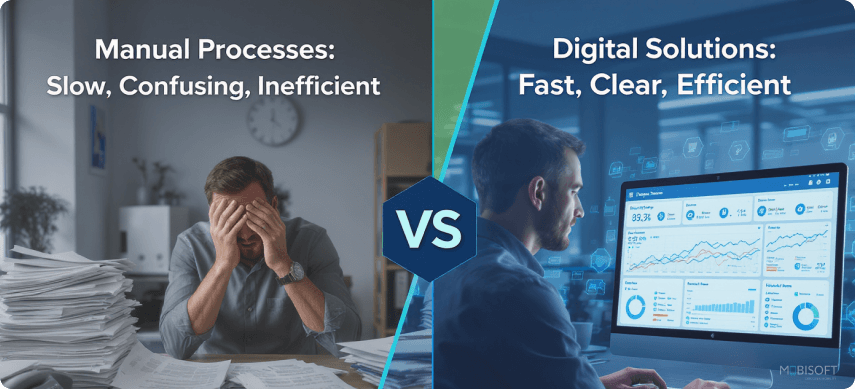
The Black Box Problem
Most freight operations rely on very manual, archaic processes in which shipment status is not known until updates arrive manually. The lack of visibility creates all sorts of delays, miscommunications, and distrust among shippers, carriers, and customers. Decisions are often reactive, based upon partial or late information, which can raise operational costs and lower efficiency. These are among the biggest challenges in freight management for businesses today.
Real-Time Visibility Platforms
Continuous and real-time insight into shipments is conveyed by smart platforms through the implementation of cloud systems, APIs, and IoT sensors. Teams receive alerts of potential disruptions while being able to track cargo location and closely monitor conditions. It allows teams to proactively manage any delay or exception, reducing uncertainties.
Improving Customer and Operational Experience
Logistics management teams can engage proactively with clients, foresee issues, and swiftly adapt plans using real-time data. Clients no longer await updates, which bolsters connections and improves trust. Internally, operations groups obtain practical insights to enhance routes, resource distribution, and performance indicators.
Utilizing these platforms changes the freight process from unclear and reactionary to clear and anticipatory. Businesses achieve improved oversight of their processes and can make more informed choices that lessen inefficiencies while enhancing service dependability through advanced logistics automation tools.
To explore how smart tracking tools enhance real-time visibility in logistics, check our detailed insights on advanced monitoring systems for transporters.
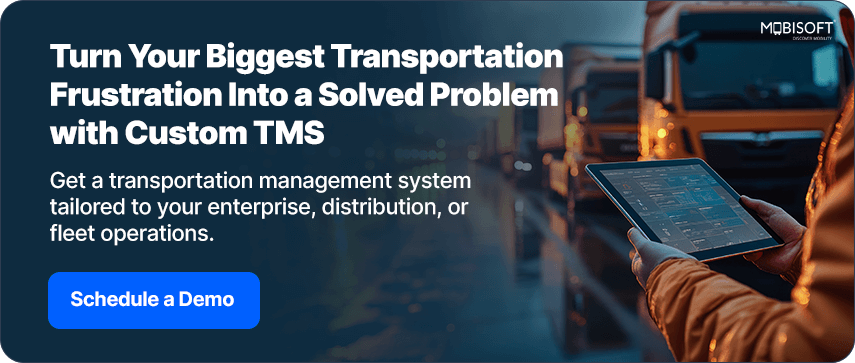
Predictive Analytics for Cost Optimization in Logistics
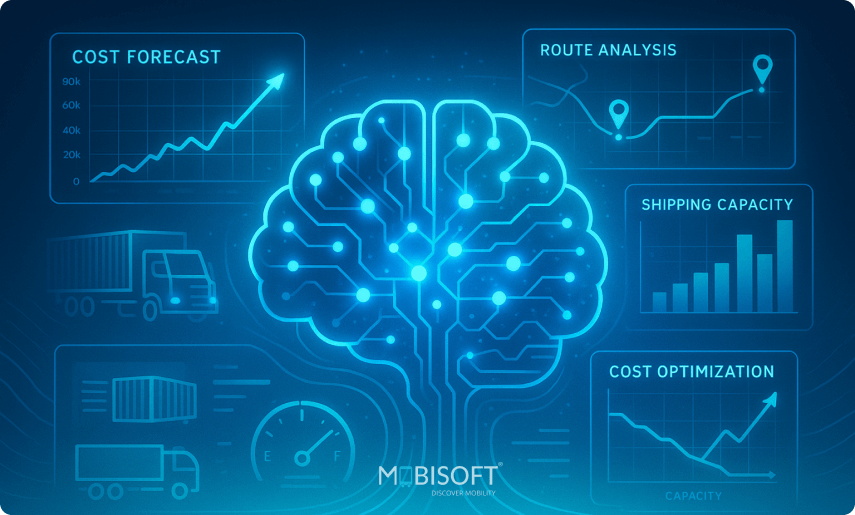
The Challenge of Unpredictable Costs
Freight costs are inherently volatile. Carrier rates change, as do fuel prices, daily. Moreover, limited capacity often results in unexpected cost surges. Traditional quotation methods respond to this instead of staying ahead of it, which makes budgeting hard and constrains the ability to protect margins. These are common logistics optimization challenges that modern technology aims to solve.
Predictive Pricing Through Technology
Transportation Management Systems (TMS solutions) make use of AI-powered rate engines. These engines collect extensive data and perform analysis to forecast future demands. Rather than reacting to fluctuating conditions, teams can plan and make strategic procurement decisions. The result is fewer bottlenecks and enhanced financial predictability.
Shifting From Cost Control to Margin Optimization
With the help of technological tools, logistics management teams can optimize their margins in addition to controlling finances. Predictive pricing allows for better contract negotiations, smarter carrier selection, and informed decisions on routing or load consolidation. Companies take a more strategic view of transportation spend without sacrificing service quality.
Learn how a transportation management system can help optimize logistics costs and enhance route efficiency.
Strengthening Freight Operations with Real-Time Visibility Platforms
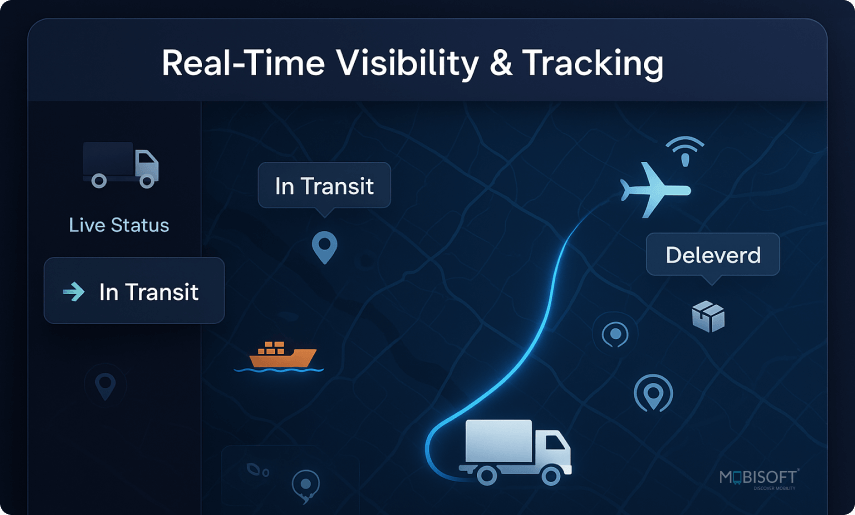
Why Real-Time Tracking Matters
Delayed updates and lack of visibility are two main transportation management challenges in conventional transportation management systems. Any disruption in a short span tends to ripple along the supply chain, misses deadlines, increases costs, and disappoints customers. Real-time tracking addresses this with minute-by-minute updates of shipments. Teams no longer need to wait for status reports or refer to outdated spreadsheets. Instead, they can take immediate action the moment a problem occurs.
Technology Enabling Instant Insight
The latest freight visibility platforms cannot function without the implementation of APIs, IoT sensors, and GPS systems. These provide location, environmental condition, and transit progress updates that feed centralized dashboards displaying the status of every shipment. Furthermore, teams can detect anomalies and automatically get alerts when delays or deviations from plans occur, making supply chain management more effective.
Enhancing Customer Experience
Customers nowadays want transparency, and rightfully so. To fulfill this, real-time shipment update capabilities are utilized by businesses. In this manner, teams can proactively handle customers and even anticipate needs through AI in freight management. Real-time visibility allows operations teams to reroute shipments, adjust schedules, and focus on urgent deliveries. Thus, modern logistics management systems help stop minor problems from turning into major disruptions.
Operational and Strategic Impact
Real-time monitoring transforms the team's internal operations entirely. Leaders can pinpoint obstacles, assess carrier effectiveness, and efficiently enhance workflows. Using live data helps predict outcomes, improves decision-making, and boosts efficiency and profits. Companies that embrace real-time visibility gain an advantage over others by shifting from fixing problems after they occur to managing the logistics supply chain in advance.
Discover practical tips on choosing the right Transportation Management System (TMS) to strengthen your logistics operations.
How Are Integrated Logistics Platforms Solving Supply Chain Fragmentation?
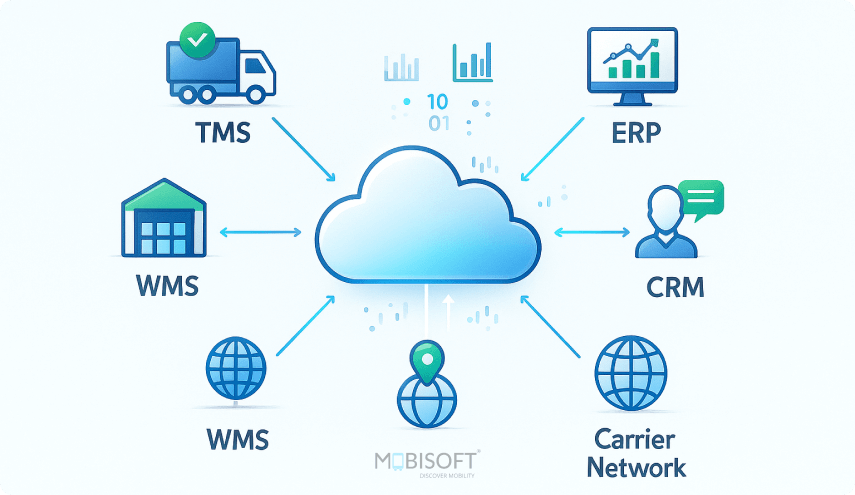
The Problem with Siloed Systems
Many businesses still rely on separate systems like CRM, ERP, WMS, and carrier management. This lack of integration limits decisions, leaves gaps in data, and makes growth harder. Teams invest too much time aligning data rather than taking action based on it. These disconnected systems contribute to supply chain management problems that slow innovation.
Integrated Cloud Platforms
Modern freight management platforms consolidate information into a single interface, providing a holistic view of the operation. Bringing data together into a single cloud system allows remote accessibility and real-time updates. This is one of the major transportation management system benefits for today’s organizations.
Enabling Collaboration
With higher accessibility and control, internal teams can collaborate with external partners effectively. Individuals from diverse teams, like sales, operations, and logistics management, can work together in real time. Carriers and clients are also able to view relevant data, reducing miscommunication and delays.
Driving Strategic Advantage
Supply chain management solutions work on connected platforms, making daily tasks easier and helping businesses think. With centralized data, businesses can forecast more, plan better, and use resources smarter. They can grow their operations without making things more complicated, while keeping risks low and maintaining high service quality.
When companies start working with smooth and integrated platforms, it improves teamwork visibility, flexibility, and overall efficiency. This strengthens how businesses operate and helps them stay competitive.
Understand how connected systems improve supply chain management through seamless logistics integrations.
Efficient Freight Management with Smart Solutions
Modern freight management solutions are self-learning, reducing human effort while improving efficiency. It represents a fundamental shift in the way firms operate as well as what customers experience. We have seen how modern solutions tackle the "black box" problem in logistics. The visibility is instant now. This turns frustrating operational guesswork into predictable, proactive management.
A digital freight system is a fundamental change in the way you operate. We've seen how modern solutions completely smash the "black box" problem in logistics. Visibility is instant now. This turns frustrating operational guesswork into predictable, proactive management.
Logistics is no longer just a boring expense. It's a core strategic advantage. You absolutely need to future-proof the business. Give your teams intelligent, integrated platforms that do more than just manage cargo. Start acting like the strategic leader your entire supply chain needs. That's the real mandate.
Read how transportation management software simplifies complex operations and drives efficiency in modern logistics.
Key Takeaways:
- Today’s freight management needs digital systems to replace traditional, mistake-prone methods that slow things down and make customers lose trust.
- Solutions that show what’s happening right now turn disorganized supply chains into clear networks. This lets teams watch, predict, and handle problems as they come up.
- AI-powered freight management software solutions change logistics from just reacting to costs to improving profits. This makes finances more stable and gives more power when negotiating.
- Linked systems get rid of separate workflows. This helps teams and partners work together to make faster choices based on data.
- Transportation management systems using cloud technology make things more flexible, open, and efficient. It also cuts down on risks in day-to-day work.
- Technology turns logistics management from just a needed task into a smart move. This gives companies an edge and keeps customers coming back.
- Digital transformation allows freight managers to do more than just coordinate. It gives them tools to lead using insights, data analysis, and connected smart systems.
Learn how technology in logistics management is transforming operations, boosting transparency, and enabling smarter decisions across the supply chain.

FAQs
In what ways does real-time visibility enhance freight operations?
Real-time systems provide live tracking of shipments, along with monitoring of environmental factors and alerts about potential issues. Teams use this to act, adjust routes on the spot, and share updates with clients. This keeps delays at a minimum, resources are used better, and customers feel more assured.
What advantages do clients gain from digital freight management?
Clients receive clear and up-to-the-minute delivery info, which reduces confusion and frustration. Open communication prevents delays and builds trust in the service offered through digital freight management and logistics automation tools.
In what ways does predictive analytics improve strategic decision-making?
Predictive analytics shifts teams from reacting to taking preemptive action. Logistics management teams use it to forecast needs, optimize routes, secure better deals, and manage combined loads. Decisions based on data cut down on waste, support future planning, and improve the quality of service.
Are these digital solutions appropriate for businesses of every size?
Modern freight management can adapt and expand as per demand. Small businesses start using basic tools, while larger firms add complex workflows as needed. This flexibility helps improve efficiency, transparency, and decision-making, no matter the company's size or how complex its supply chain is.
Are these technologies more cost-efficient than conventional methods?
While the initial investment can feel high, the latest travel management systems lower errors, delays, and wasted efforts over time. Tools like automation, smarter pricing predictions, and integration provide real value by cutting costs, managing margins better, and boosting overall results.

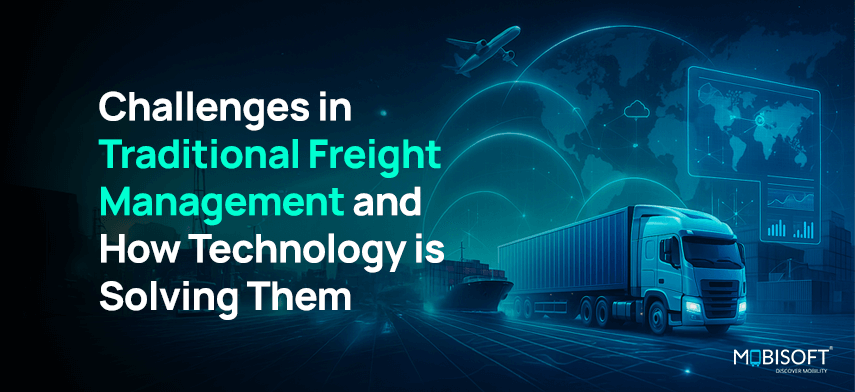


 September 29, 2025
September 29, 2025


